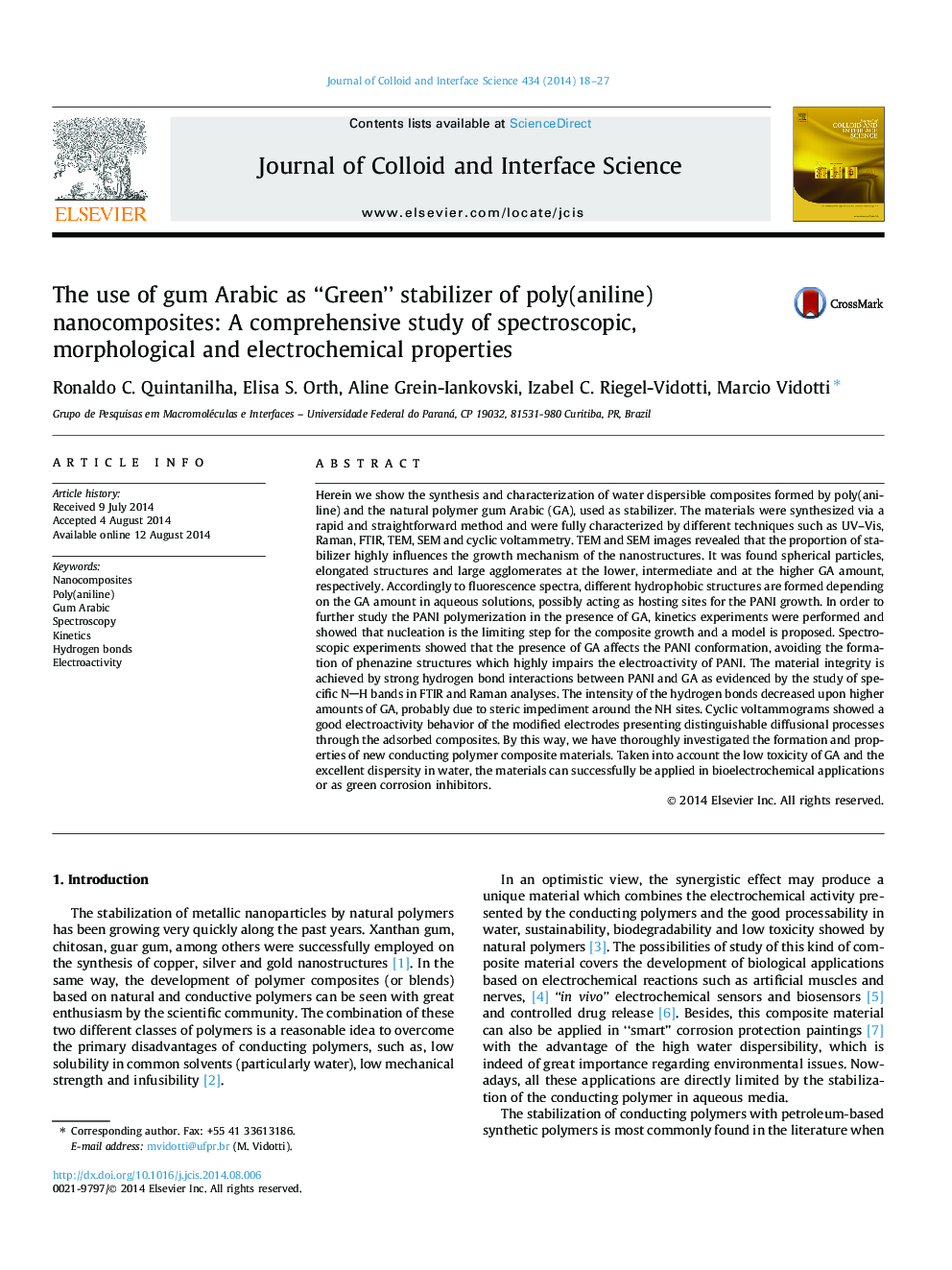| کد مقاله | کد نشریه | سال انتشار | مقاله انگلیسی | نسخه تمام متن |
|---|---|---|---|---|
| 606889 | 1454561 | 2014 | 10 صفحه PDF | دانلود رایگان |
• Stable gum Arabic – PANI nanocomposites were synthesized in aqueous solution.
• The nanocomposites integrity is kept by strong hydrogen bond interactions.
• The amount of gum Arabic influences drastically the composites morphology.
• Kinetics studies were performed to elucidate the mechanism growth.
• GA–PANI modified electrodes presented high electroactive behavior.
Herein we show the synthesis and characterization of water dispersible composites formed by poly(aniline) and the natural polymer gum Arabic (GA), used as stabilizer. The materials were synthesized via a rapid and straightforward method and were fully characterized by different techniques such as UV–Vis, Raman, FTIR, TEM, SEM and cyclic voltammetry. TEM and SEM images revealed that the proportion of stabilizer highly influences the growth mechanism of the nanostructures. It was found spherical particles, elongated structures and large agglomerates at the lower, intermediate and at the higher GA amount, respectively. Accordingly to fluorescence spectra, different hydrophobic structures are formed depending on the GA amount in aqueous solutions, possibly acting as hosting sites for the PANI growth. In order to further study the PANI polymerization in the presence of GA, kinetics experiments were performed and showed that nucleation is the limiting step for the composite growth and a model is proposed. Spectroscopic experiments showed that the presence of GA affects the PANI conformation, avoiding the formation of phenazine structures which highly impairs the electroactivity of PANI. The material integrity is achieved by strong hydrogen bond interactions between PANI and GA as evidenced by the study of specific NH bands in FTIR and Raman analyses. The intensity of the hydrogen bonds decreased upon higher amounts of GA, probably due to steric impediment around the NH sites. Cyclic voltammograms showed a good electroactivity behavior of the modified electrodes presenting distinguishable diffusional processes through the adsorbed composites. By this way, we have thoroughly investigated the formation and properties of new conducting polymer composite materials. Taken into account the low toxicity of GA and the excellent dispersity in water, the materials can successfully be applied in bioelectrochemical applications or as green corrosion inhibitors.
Figure optionsDownload high-quality image (63 K)Download as PowerPoint slide
Journal: Journal of Colloid and Interface Science - Volume 434, 15 November 2014, Pages 18–27
